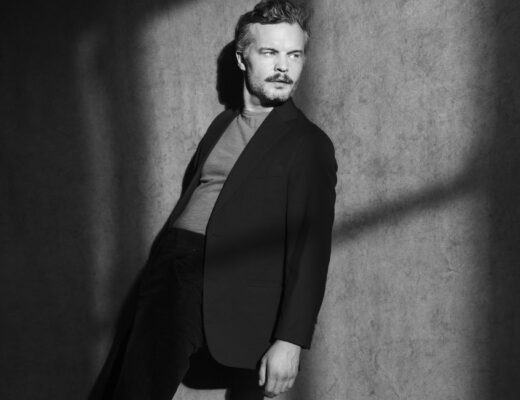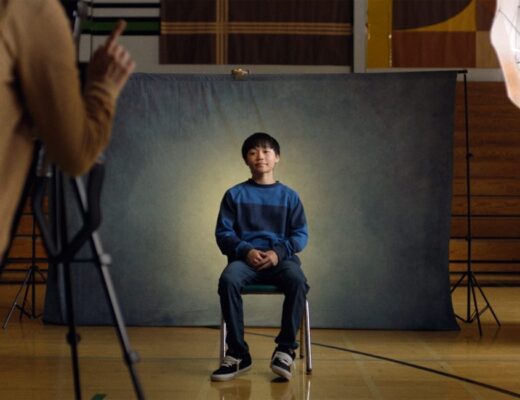Even though, to many audiences today, the eclecticism of live-action and animation may appear as a sort of a postmodernist achievement in the realm of film, the truth is that this mélange is actually as old as the history of cinema itself. In the wake of the early experiments of Georges Meliès, Max Fleischer, or Dudley Murphy’s Danse Macabre during the silent era, it would not be just Walt Disney who would dream of combining the representational aspects of our human world with the imaginary facets of cartoons (like in Alice Comedies); every so often, viewers could be immersed in dreamy, fantasy-like states wherein a beloved star like Gene Kelly would share the screen with an amicably animated character such as Jerry Mouse in George Sidney’s Anchors Aweigh. Such a composition responds to the secret desires, of both adults and children, to live among their imaginary childhood friends in some surreal world. It wasn’t until 1988 when Robert Zemeckis’ Who Framed Roger Rabbit premiered, however, that a feature live-action-cum-animated film proved itself simultaneously as a technical marvel and groundbreaking filmic achievement of singular prestige and quality. Although its huge box office success — Who Framed Roger Rabbit was the second-highest-grossing film of the year — paved the way for the posterior, and perhaps more popular, cultural phenomenon of Space Jam, the laborious production process and financial unpredictability of the genre has curtailed its induction into the American, and perhaps global, cinematic consciousness as a ubiquitous fixture.
But considering Zemeckis’ work in Who Framed Roger Rabbit, one could make the claim that the synthesis of these two modes of filmmaking goes beyond either spectacle or commercialism. In fact, it’s apparent that the film’s very premise divulges its search for a more intrinsic connection between live-action and cartoon. This search has led Zemeckis to formulate not only a uniquely jovial interpretation of film (neo-)noir — family-friendly visualism canvassed over the latter’s aesthetic grittiness — but also straddle, in terms of escapist entertainment, the fine line between hard-boiled pulp fiction and comic strip narrative. Even though Who Framed Roger Rabbit has a clear point of origin (it was adapted from Gary K. Wolf’s mystery novel), one can never take for granted how the source material would be molded and redefined in the hands of a visionary like Zemeckis.
Right after the film’s opening, where we see the clumsy and playful Roger wreaking havoc in his bid to take care of little Baby Herman, Zemeckis shatters the boundaries between on- and off-set, employing a reflexivity that proves definitive of both the film’s fictional setting of 1947 Toontown and the audience’s experience of the contradictions between what’s visible and not. The world of L.A./Toontown is structured according to these precepts, shaped by characters hiding behind walls, inside washing sinks, moving through secret doorways, yet never fully out of the camera’s sight; a witty metaphor for this duality can be found in the scene where Eddie Valiant (Bob Hoskins), the film’s melancholic, whisky-dipso private eye, meets with Marvin Acme (Stubby Kaye), the owner of Acme Corporation and Toontown, in an underground nightclub. Acme splashes vanishing ink onto Eddie’s shirt, and at that moment articulates the film’s central motif of the mysterious ambiguity that pervades not just seeing but feeling. Like the joining of live action and animation, the visible and invisible occupy an ambivalent, deliberately irresolvable deadlock in the film.
In the same vein, Who Framed Roger Rabbit invites these dualities upon its characters too: the accused but innocent Roger is framed; Jessica Rabbit (one of the most memorable femme fatales of animation — and arguably cinema) appears to be a pawn in this scheme; Judge Doom (distinctly embodied by Christopher Lloyd) and his toon weasel henchmen aren’t the righteous defendants of law and order; Baby Herman is not the endearing child star we spot at first glance, but instead an offensively funny brat; and, of course, Eddie gradually grasps — in addition to the identity of who murdered his brother — clues about his own, apparently morose identity. The solemn, desperate guy who seems to be always disconnected from his happy, playful inner-child isn’t the full picture, and it’s worth noting too that Zemeckis’ penning of this unusual friendship between Eddie and Roger lends his otherwise hardboiled story a buddy movie quality. What’s radical here is how Hoskins and, well, a bundle of lines and colors could whip up such a tight and convincing chemistry together. They reveal, in addition to the permanently conflicted sides of a single story, the malleability of individual personalities: toon characters are composed of distinctly human characteristics, while the real people can be of very laughable cartoonish dispositions. As such, it shouldn’t surprise when in the final scene the wall that separates the worlds of humans and toons, adulthood and childhood, reality and imagination collapses, the contrasts finally merging.
Zemeckis, notably like Steven Spielberg or Guillermo del Toro, is one of those rare film illusionists who never lost touch with their childhood passions and fantasies, who always cared too deeply about the imaginative and hallucinatory qualities in their work to temper the line between the real and non-real. It’s no accident that his films, frequently and to various degrees, revisit a lost past or realize times when unpleasant changes in the present serve to plunge historical ideals into danger and oblivion, a motif usually hugely inspirational for the Zemeckis protagonist. In Who Framed Roger Rabbit, the sunny, jolly Toontown (with all its happy memories and laughter) is indeed under the imminent threat of destruction. But back to the creative relationship between live-action noir and animated tale: it’s possible to think of the film as a dual realization of mature and childish dispositions (such as a group of young kids smoking cigarettes riding on the back of a tram), and, especially considering how Zemeckis occasionally, playfully plants a couple of violent sequences (for example, when Judge Doom cruelly destroys a toon’s shoes) or erotic innuendo — when Eddie’s girlfriend, Dolores (Joanna Cassidy), stumbles upon Eddie pants-down with Jessica Rabbit — throughout his narrative, this cohabitation is what articulates the filmmaker’s adulation for modern cinema’s infant origins, reconnecting the framing of the adult world with its earlier, easier innocence.
Part of Robert Zemeckis: Movie Magician







